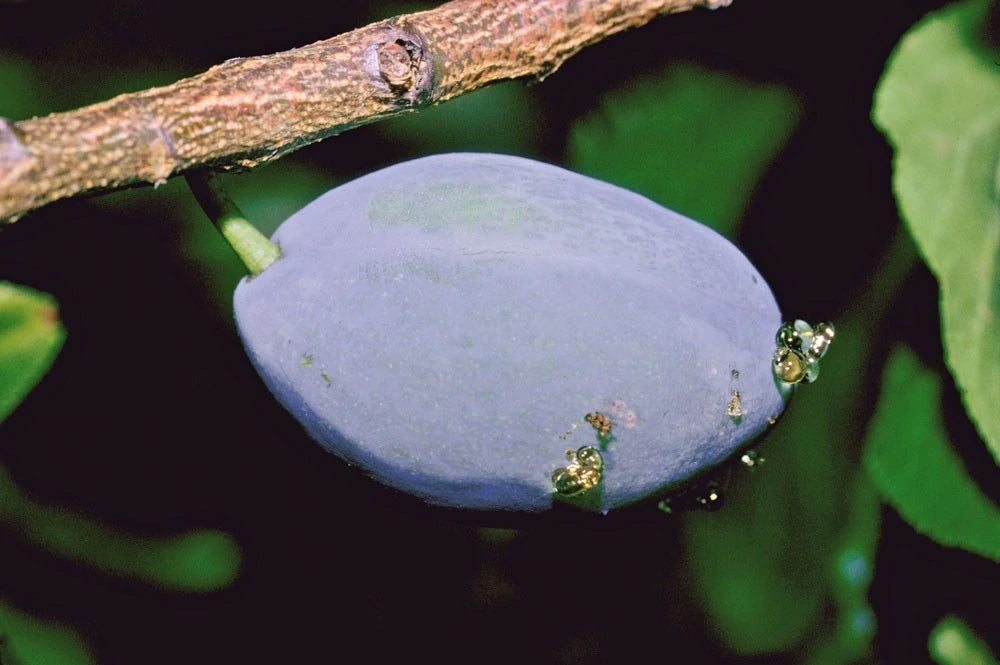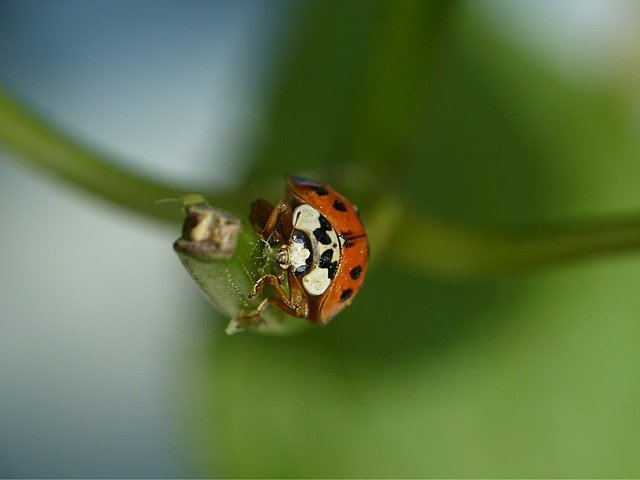Controlling plum moth (2022)
Plum moths are persistent pests responsible for inedible produce during harvesting. Pink plum maggots, the caterpillar larvae of the plum moth, live in and eat the flesh of plums, damsons and greengage, causing misshapen fruit that will often ripen and drop prematurely.
Unfortunately, unless you spot the eggs quickly once they are laid, you will not realise you will have an infestation until it's too late. So, how do you keep plum moths away? You can take steps to control pink maggots by using pheromone traps to capture the adult plum moth to prevent the cycle. Read this article to learn about plum moths and how to deal with them in all stages.
Why are my plums full of maggots?
Plum maggots are simply the larvae of the plum moth (Grapholita funebrana), which lays its eggs on the surface of plums. After hatching, the caterpillars (or maggots) burrow into the fruit to feed, ruining them and making them inedible.

They later burrow out and emerge from the fruit once they have fully been fed, pupating inside silk cocoons. They overwinter in hidden places, especially loose bark, which is often how the cycle repeats and continues, even when you think you have gotten rid of them! In severe circumstances, caterpillars can pupate early and produce a second generation of moths in late summer, especially if it’s been a particularly hot year.
Most cause no noticeable damage to garden plants, but are a persistent pest to farmers and harvesters due to the destruction it does to plums, damsons and greengage. They are most active from May to September and are often spotted flying around on warm, late evenings. As temperatures increase, the active season for plum moths is extending.
What do plum moths look like?
Plum moths are described as small, their wings being a dull grey to dark brown with blackish markings. Their wingspan is approximately half an inch.

Plum maggots can easily be identified by spotting pinkish caterpillars inside your plums, burrowing trails with traces of brown excrement, holes on the outside where burrowing has taken place, and early ripening plums that will drop from the trees early due to damage caused on the inside.
Can you eat plums with maggots?
In theory, plum moth larvae have no toxicity to humans. But we would not recommend doing so if they have, as it is easy for spoiled fruit to pick up harmful bacteria, either when in the tree or from the ground or passing animals.
Many compromise by cutting the maggots out of the plums and using them for cooking. If you are distraught at the idea of wasting fruit, then this is likely the safest method for using unwanted produce.
How do I get rid of plum moths?
We at Andermatt Home and Garden offer environmentally friendly and chemical-free solutions to eliminate the cycle of the plum fruit moth completely, particularly our plum moth pheromone trap.

These traps can simply be hung from trees in the early development of plum fruit when it comes into season, catching the adult moths and preventing larvae from being reproduced into the fruit. Trapping and monitoring adult plum moths allows a user to understand the size of the pest population and, if necessary, take action before caterpillars destroy the fruit.

One plum moth trap will provide you with 2 sticky inserts and 2 pheromone traps, each needing to be replaced every 6 weeks. Our traps are pesticide-free, specific to plum moths and can be reused in future years with additional refill packs that can be found on our website. Get yours tomorrow with free next day delivery.

Do plum moth traps work?
Yes! Traps are shown to be effective long-term against plum fruit moths and their larvae. The pheromone uses the scent of female plum moths, attracting the male plum moths. Once they touch or land on the sticky insert, they become stuck and die. This prevents breeding and egg laying, and in turn the hatching of more caterpillars on your trees.

How do you use a plum moth trap?
- Unfold the trap and attach the hanger
- Unfold one sticky insert, and open one pheromone lure sachet. Place the lure in the middle of one sticky insert
- Place the sticky insert, sticky side upwards, inside the trap
- Fold up the bottom edges of the trap to hold the sticky insert in place
- Hang the trap from a plum tree branch at head height, preferably in a direction the wind normally blows from
- Store the remaining lure and insert in a cool, dry place
The trap should be checked weekly to monitor moth population and, if high numbers of plum moths are trapped, remove them to clear space for more to be caught. After 6 weeks, replace both the sticky insert and pheromone lure with the replacement in the pack.
Andermatt’s products have a good reputation for being simple and easy to use. However, if you are a beginner in the gardener community, please check out our YouTube video that will offer you a tutorial on how to set up your plum moth trap
Where should moth traps be placed?
Plum moth traps should be hung from a plum, damson or greengage tree branch at head height to provide long term plum moth prevention. One trap will cover an area of up to 5 average sized trees with a range of 15m.
When to use pheromone traps?
Adult moths are active from May to September, so it is highly recommended that you get your trap set up in late Spring before your fruit trees begin to bloom.
Plum moth insecticides
Pesticides are not ideal due to their damage to the environment and to human health. For the best insecticides for plum moth, it is recommended to use shorter-persistent pesticides that break down more quickly, and therefore cause less damage.
In order to be effective, the whole tree must be thoroughly drenched in pesticides. So this treatment is not worth it for larger trees.
- Shorter-persistent pesticides include Neudorff Bug Free Bug and Larvae Killer, and Bug Clear Gun for Fruit & Veg
- Longer-persistent pesticides (which contain harmful synthetic pyrethroids like deltamethrin, lambda-cyhalothrin and cypermethrin) include Provanto Ultimate Fruit & Vegetable Bug Killer, Py Bug Killer and Westland Resolva Bug Killer.
- Use a pheromone trap to alert you when to spray.
Plum moth prevention
Encourage natural predators
Gardens are full of predators and natural enemies that are especially known to the biocontrol community. Try enticing some of these creatures into your garden to assist in dealing with these pests.
Bluebirds and swallows prefer the adult moths, while grosbeaks and orioles have a taste for the caterpillars. You can lure more birds into your garden by providing them with feeders, birdbaths and nest boxes!
Hedgehogs will happily eat both the adult moths and the larvae. Provide them with hedgehog food, place ramps on the edge of your pond, and create hedgehog holes and tunnels for them to roam freely between gardens without risk of injury on the roads.

Ground Beetles are a well-known consumer of moth-larvae, and plum moth larvae is no exception! Place stones and logs, beetle-banks, nightlights and gravely shallow water out into your garden if you want to increase the beetle population!



